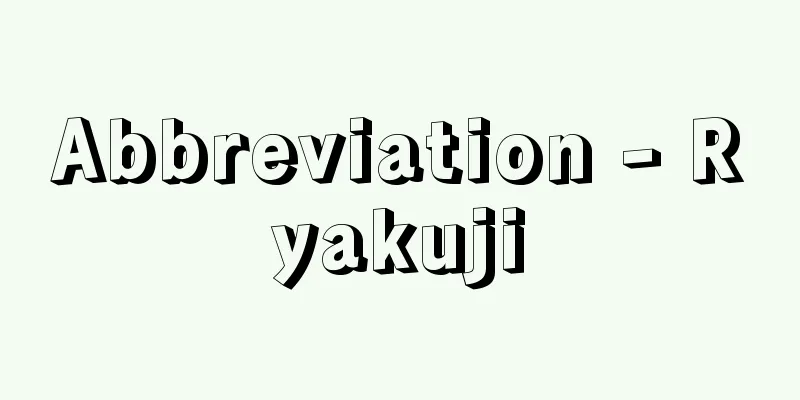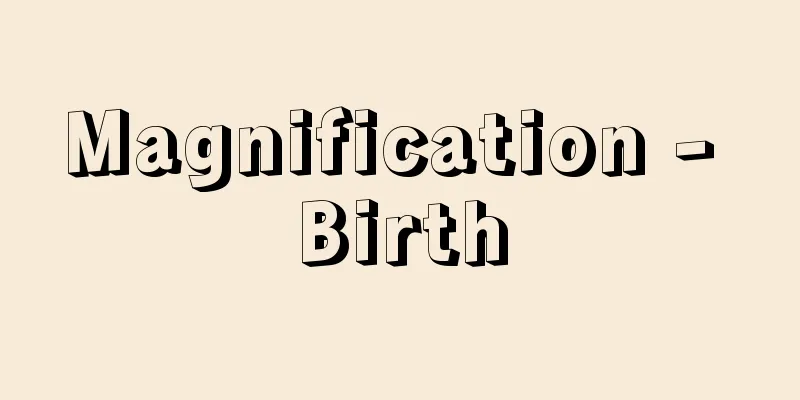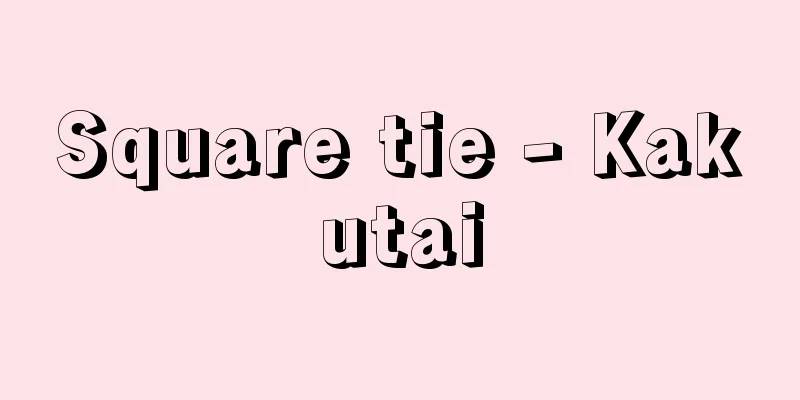Abbreviation - Ryakuji

|
A character that omits some of the strokes of a Chinese character or simplifies the overall structure to reduce the scribe's effort or make it easier to write in small letters. A type of variant character. In modern China, it is called simplified characters. In contrast to abbreviated characters, the standard characters on which they are based are called orthographic characters or original characters (traditional characters in China). Abbreviated characters include (1) characters that omit some of the strokes of orthographic characters (such as 獨 → 独, 聲 → 声, 號 → 号), (2) characters that have some of the components of orthographic characters (mainly the phonetic parts) changed to simplified forms (such as 釋 → 著, 鐵 → 鉄, 広 → 広), (3) characters that omit fine dots of orthographic characters (such as 者 → 者, 壯 → 宗), (4) characters that are based on the cursive form of orthographic characters (such as 盡 → 至, 當 → 当), and (5) characters that have the entire orthographic character changed to another simplified form (禮 → 礼, 萬 → 萬, 臺 → 台, etc.). It is said that abbreviated characters were used in China soon after the establishment of the regular script, but they were basically considered temporary, expedient, and unofficial. In the 20th century, a movement to treat abbreviated characters (simplified characters) as the official style of writing began, and especially since the founding of the People's Republic of China (1949), simplified characters have been promoted as national policy. In 1956, the State Council published the "Chinese Character Simplification Plan," and in 1964, the Chinese Character Reform Committee announced 2,252 simplified characters that are currently used as the official style of writing. Some of these characters, such as dot, 独, 吾, 声, 虫, and 虫, match the characters of common Japanese kanji, but there are many that do not, such as 雲 (cloud), 時, and 气 (air). Abbreviated characters have been used in Japan since the early days of the import of kanji, with do (copper) and 竟 (mirror) appearing in the Jinbutsu Eizou Kagami (5th-6th century) kept at Sumida Hachiman Shrine, and mu (牟) and 部 appearing in the Mino Province Family Register from 702. Abbreviated characters were often adopted as the characters of common Japanese kanji after World War II, and are still used in common Japanese kanji today. [Masayuki Tsukimoto] [Reference] |Source: Shogakukan Encyclopedia Nipponica About Encyclopedia Nipponica Information | Legend |
|
漢字の字画の一部を省略したり、全体の構成を簡略化することで書記の労力を省いたり、細書の便を図ったもの。異体字の一種。現代の中国では簡体字という。略字に対し、そのもとになった標準的な字体を正字、本字(中国では繁体字)という。略字には、(1)正字の字画のうち一部分を省略したもの(獨→独、聲→声、號→号など)、(2)正字の構成要素の一部(主として表音部分)を簡略形に変えたもの(釋→釈、鐵→鉄、廣→広など)、(3)正字の微細な点画を省略したもの(者→者、壯→壮など)、(4)正字の草書体をもとにして構成したもの(盡→尽、當→当など)、(5)正字の全体を他の簡略な形に変えたもの(禮→礼、萬→万、臺→台など)がある。中国では楷書(かいしょ)体の成立後まもなく略字が使用されたといわれるが、それらは基本的には一時的、便宜的、非公式なものと意識されていた。20世紀に入って略字(簡体字)を正式の字体として扱おうとする運動が起こり、とくに中華人民共和国成立(1949)以後は国策として簡体字化が推進されている。1956年には国務院が「漢字簡化方案」を公布し、64年に中国文字改革委員会が発表した簡体字2252字が現在正式の字体として使用されている。 このなかには点、独、号、声、虫など日本の常用漢字の字体に一致するものもあるが、云(雲)、(時)、气(気)など一致しないものも多い。日本でも略字は漢字輸入の当初から使用され、隅田八幡(すだはちまん)神社蔵人物画像鏡(5~6世紀)には同(銅)、竟(鏡)、大宝(たいほう)2年(702)の美濃(みの)国戸籍帳にはム(牟)、(部)などがみえる。略字は第二次世界大戦後の当用漢字の字体に多く採用され、現在の常用漢字にも継承されている。 [月本雅幸] [参照項目] |出典 小学館 日本大百科全書(ニッポニカ)日本大百科全書(ニッポニカ)について 情報 | 凡例 |
<<: Summary action - summary action
Recommend
Sanyo Shinkansen
To overcome the transportation capacity of the San...
Ishu - Ishu
Another name for Iga Province. Source: The Selecte...
External thread
A screw with threads on the outer surface of a cyl...
Battle of Kadesh
The Hittites were also defeated in battle, and th...
Ibusuki leaf
A native variety of tobacco grown near Ibusuki Cit...
Olivine norite - Olivine norite
…The colorless minerals are mainly plagioclase, w...
Asian Horned Frogs - Asian Horned Frogs
...The family Pipidae includes the African clawed...
Ethionamide - Echionamido (English spelling) ethionamide
An anti-tuberculosis drug. Its anti-tuberculosis ...
Kiyomoto Enjudayu
The tayuu name of the head of the Kiyomoto school...
Iwanai [town] - Iwanai
A town in Iwanai County, Hokkaido. It is located a...
Dorf
… The first and most detailed classification of v...
neodymium
Nd. Atomic number 60. Electron configuration [Xe]...
Martines de Pasqually
Around 1710-74 He was the greatest founder of the ...
Council of Europe
A regional international organization established...
Ergastērion (English spelling)
An ancient Greek word meaning "workplace.&quo...
![Hiroshima [city] - Hiroshima](/upload/images/67cca7488b28d.webp)
![Chunan [town] - Chunan](/upload/images/67cc3396d3cd3.webp)







